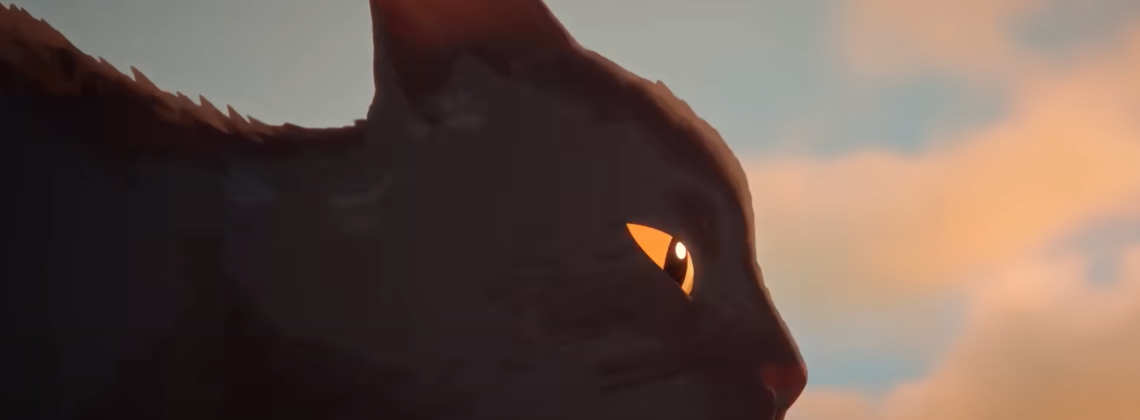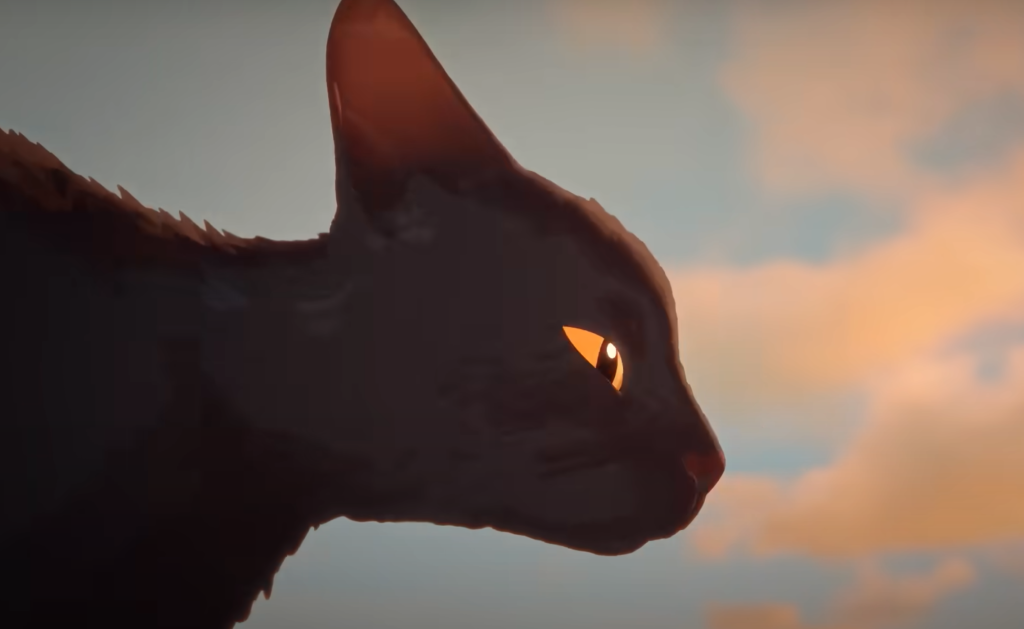

In ‘Flow,’ a world that’s almost ours helps us see our own
It would be easy to view Gints Zilbalodis’s film Flow (a translation of the Latvian Straume) simply as a parable about climate change. A cataclysmic flood tears suddenly through a lush, idyllic forest in the opening scenes, obliterating everything in its path, and we follow a motley crew of survivors on a perilously flimsy boat as the ever-rising floodwaters gradually submerge their whole world.
But Flow is a movie that defies easy interpretation—or, at least, it defies one single interpretation.
For one thing, this is not quite our world. It’s an eerily familiar echo of our world, a very slightly distorted mirror image. (Mirror images are an important recurring motif throughout the film, in fact.) The architecture is not quite our own. The whale-like creature that breaches the floodwaters at key moments throughout the movie isn’t any kind of whale that exists on our Earth.
And this is a human-less world. There are traces—artifacts, crumbling ruins, many boats—to suggest that humans once lived here, but they aren’t here now. The movie’s purposeful ambiguity allows for any number of theories that may explain just how this world came to be as it is. Is it our world in a distant future, or maybe a distant past? Is it an earthlike planet, colonized and then abandoned?
A shot of countless empty boats at the foot of an immense Babel-like tower stretching up into the heavens—one of the last structures still above water—seems to imply a sci-fi element: Is this a portal of some sort? Could that be where all the humans went? We aren’t told. These details are left entirely up to viewers to fill in, if they want to. The movie isn’t at all concerned with explaining—unsurprising, perhaps, given that there’s no dialogue.
The protagonist of Flow is a nameless dark gray cat. For the most part, this cat behaves and sounds like a cat. The other characters—a dog, a capybara, a lemur, and a secretarybird—act in species-appropriate ways too. There are no big-name Hollywood voice actors tossing off one-liners and making pop culture references. There is very little anthropomorphizing, apart from the fact that the animals eventually figure out how to use the rudder of their boat. It’s a thoroughly un-Disney-like animated movie. The striking realism of the animation and of the animals’ behavior adds to the emotional intensity, especially if you’re an animal lover: This is how a real animal would act under stress, and it can be difficult to watch.
I’ve seen Flow twice now, first streaming at home, then on the big screen. Both times—even when I thought I was prepared for it—it has left me crying ugly tears, and I’m not entirely sure why. I think it’s because the absence of dialogue and the filmmakers’ choice to avoid overexplaining the cat’s world means that Flow works as a universal representation of every kind of grief. One of the most moving shots is the camera’s last lingering look at the cat’s home after the cat has fled in search of higher ground. We watch as the water slowly consumes an unmade bed, an unfinished pencil sketch on a desk—little pieces of a life left behind, clues that humans did indeed once live here but, like the cat, had to flee at a moment’s notice.
So is this a parable about climate change? Maybe—but also about death, about war, about any kind of upheaval and loss. Flow is a story about a hurting world not unlike our own. There’s no need to narrow the scope.
I don’t expect the shot of the inexplicably unfinished pencil sketch sinking underwater to affect everyone else in quite the same way it affected me. As with any good work of art, much of Flow’s meaning is in the eye of the viewer. But there is a clear, simple message here too. At the start of the movie, the cat is alone by choice. By the end—without spoiling any specifics—he is in community by choice. He needs his new friends, and they need him.
I came across Ilya Kaminsky quoting George Sand the other day: “Everyone is dying, everything is dying, and the earth is dying also. I don’t know where I get the courage to keep on living in the midst of these ruins. . . . Let us love each other to the end.”
Flow is ambiguous on every point but this one.
Amanda McCrina is a writer, historian, and bookseller. She holds a degree in history and political science from the University of West Georgia. Her novels include Traitor, The Silent Unseen, I’ll Tell You No Lies, and the forthcoming Beyond Seven Forests (Lerner, 2026). She lives outside Nashville, Tennessee.
Image: Madman Films
This is a beautiful meditation.